All images copyright Love Hate
Tuesday, 28 January 2014
Love Hate
Love Hate started in 2002 in Melbourne by Geneine Honey. They stock a range of items made using unconventional industrial processes. Although there is no shipping information on their website, I contacted the owner who told me that shipping to New Zealand is available.





Friday, 24 January 2014
Stripes
Top: Gregory | Trousers: Country Road | Clutch: Marc by Marc Jacobs | Shoes: Mischief | Gold Bracelet: Veronicab | Sunglasses: Karen Walker 'Deep Freeze' in Black
All Images © Copyright Sara Mole
Sunday, 19 January 2014
Toodles Noodles
Liora Saad is an American who now calls New Zealand home. Liora is the owner/designer behind Toodles Noodles which makes eco-friendly gifting decoration and gifts made right here in New Zealand. From gift tags to garlands, tea towels to totebags, this is a fun and colourful collection well worth a visit when you want to source funky but elegant stationery and gift wrap. Toodles Noodles also offers a range of Pacifica-inspired items at a great price. Perfect when you need to buy a gift for a friend overseas, a foreign guest or a homesick Kiwi! My favourite is the Kiwiana Totebag which manages the impossible: tasteful kiwiana!
Check out Liora's e-shop on Etsy.
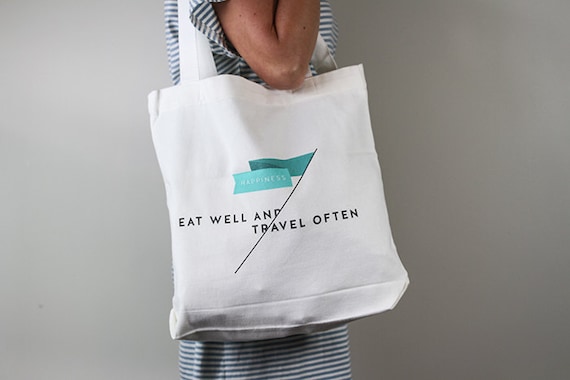
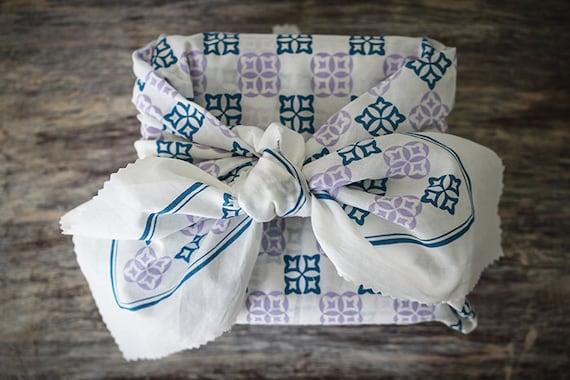
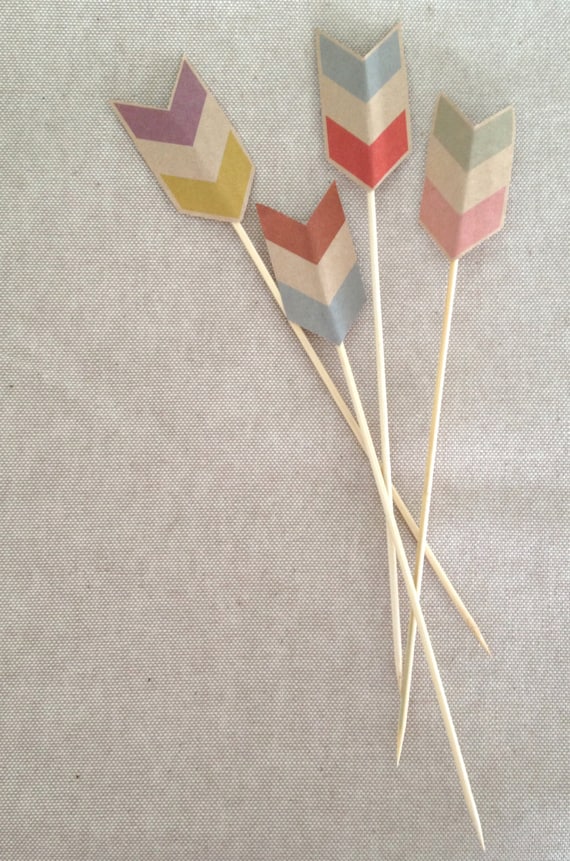
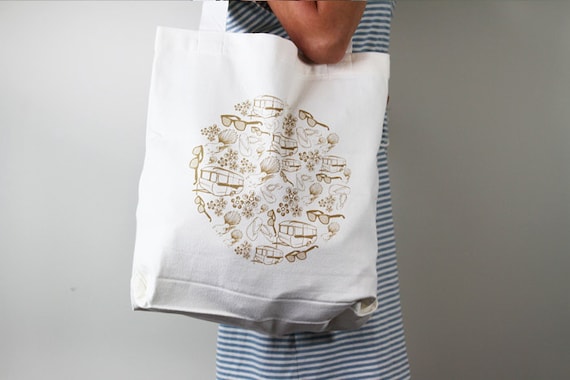
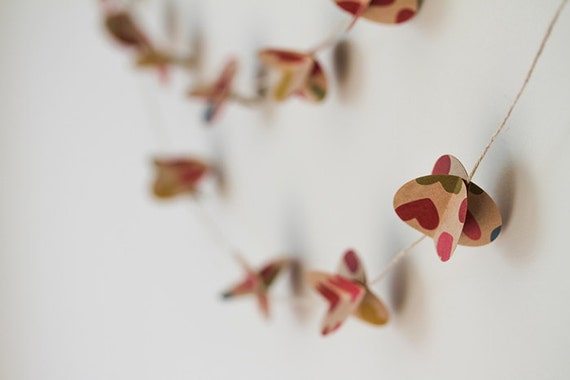
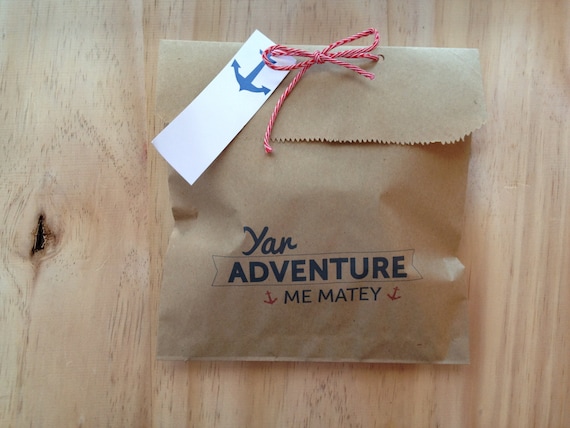

Check out Liora's e-shop on Etsy.







All images copyright Toodles Noodles
Tuesday, 14 January 2014
Sézane by Morgane Sézalory
I have been drooling over Morgane Sézalory's chic designs for some time. This month, I finally got myself some of that gorgeous Sézane style and purchased the Montana Boots:
By the time you read this, chances are that Sézane's e-shop has closed its doors for another few weeks (or most styles have sold out). Sézalory is a slick operator in this regard: opening each month with a fresh drop, then teasing you until the next opening. I missed out on the Montana Boots twice because by the time I got on the website, they had sold out in my size. I was just about to email the designer to ask her to reserve a pair when I finally managed to secure them! There's a ten-minute countdown on the basket so you need to purchase fast. This is e-retail at its most exciting!
They arrived yesterday and are a perfect fit, a rich colour and the leather is butter-soft. And all for under NZ$300 including postage. And the packaging is just lovely. A gorgeous shoe box, a soft cotton shoe bag, a little soap and a cotton tote bag! Ahhh... the French have it sorted.
These lovelies will be featured regularly in blog posts come Autumn as I style them with different outfits so stay tuned. In the meantime, here is some more Sézane fabulousness...
They arrived yesterday and are a perfect fit, a rich colour and the leather is butter-soft. And all for under NZ$300 including postage. And the packaging is just lovely. A gorgeous shoe box, a soft cotton shoe bag, a little soap and a cotton tote bag! Ahhh... the French have it sorted.
All images copyright Sézane
Sunday, 12 January 2014
The Sugar Lab
The Sugar Lab is an LA-based micro-design company that produces bespoke 3D sculpture and objects made entirely of sugar. Known as 3D sugar printing, this is an amazing new concept - I strongly suggest a visit to their website, it's incredible!


All images copyright The Sugar Lab
Saturday, 11 January 2014
Timing
So I am walking to the Newmarket post office this morning wearing my Karen Walker tee, black shorts and white Superga sandshoes. Walking in front of me is a mother with two teenage girls, one of whom is wearing the same tee, black shorts and white sandshoes (Converse).
Goes to show that a 42-year-old and a 15-year-old can wear the same outfit and look and feel great! Some clothes/outfits just work across all ages.
Goes to show that a 42-year-old and a 15-year-old can wear the same outfit and look and feel great! Some clothes/outfits just work across all ages.
Wednesday, 8 January 2014
New Year, New Style Direction: Part 3
Now, it's time to go shopping!
Buy the Best Quality You Can Afford
It took me a while to be comfortable spending $150+ on a tshirt but let me tell you, I would rather have one great tee than five mediocre ones. This rule is relative to your situation. For me, it was moving away from spending $60 at Country Road to $150 at Karen Walker. For others it might be making the leap from spending $25 at Glassons to $60 at Country Road for one tee. It's about the best quality YOU can afford and what you feel 'safe' spending. It's not about brand snobbery, it's about deciding that you would rather spend more on less.
Understand Fabrics and Cuts
Planning to buy 'a merino jumper'? Well go to an outdoor store. Want a fashion garment that actually flatters you? Look for a jumper with 5% silk or cashmere in the merino fabric that's from a fashion retailer. Want to know why those black trousers cost $200 when you can buy a pair at another store for $99? Compare the fabrics. Take a close look at the seams. Check the lycra content. Will those $99 trousers still look good in a month? The message here is learn how clothes are cut and why specific fabrics are chosen to create certain garments.
Don't be Afraid to Try Different Brands
Sure, some brands are out of reach due to their pricing or sizing, but sometimes you can be pleasantly surprised. I remember a colleague some years ago telling me how she liked the way I dressed and could I tell her where I bought my clothes. When I said Country Road she said 'oh I could never afford Country Road'. That's when I introduced her to their loyalty scheme which is extremely generous and encouraged her to go in at sale time. She was surprised that she could pick up sale items for the same price as full-priced items in lower quality stores.
Start Small
If you're nervous about big sweeping changes, focus on one item first. Have fun finding that one item and enjoy the hunt! For me this year, it's about a quality cashmere crew neck jumper. I wear crew neck merino jumpers all the time so I know I love this type of garment, but this year I want to take the plunge and switch to cashmere. This is a huge price leap so I am going to do my research and start with that one piece.
The Classics Really do Work
I'm sure you've all read those articles in fashion magazines which tell you to 'invest in the classics'. What this means is to buy the garments that have a track record of success. In other words, the items that don't date quickly, suit most women and can be worn with a number of different outfits. Here are some examples:
What is common to these items is that they're not only stylish but they're also incredibly practical. Your scarf should look good but it also needs to keep you warm. That trenchcoat looks chic but it also works hard in Spring and Autumn keeping you dry.
Take Your Shoes Shopping (aka Buy in Outfits)
Vital when replacing lots of items, or updating complete looks: take shoes and other items from your wardrobe with you when shopping. That way, you can create an outfit in the store and lower the risk of endiing up with an orphan. 'Orphans' are those items you buy because you
a) Adore them as an object, or
b) Assume they'll just go with everything, or
c) Think you'll eventually buy something that goes with them
You get them home and they match nothing, so they are literally orphans in your closet.
Have Fun (but Stick to the Rules!)
Whatever your journey, enjoy yourself! Stick to your budget, be confident but always be true to yourself: you know when something truly looks great and when it doesn't.
Buy the Best Quality You Can Afford
It took me a while to be comfortable spending $150+ on a tshirt but let me tell you, I would rather have one great tee than five mediocre ones. This rule is relative to your situation. For me, it was moving away from spending $60 at Country Road to $150 at Karen Walker. For others it might be making the leap from spending $25 at Glassons to $60 at Country Road for one tee. It's about the best quality YOU can afford and what you feel 'safe' spending. It's not about brand snobbery, it's about deciding that you would rather spend more on less.
Understand Fabrics and Cuts
Planning to buy 'a merino jumper'? Well go to an outdoor store. Want a fashion garment that actually flatters you? Look for a jumper with 5% silk or cashmere in the merino fabric that's from a fashion retailer. Want to know why those black trousers cost $200 when you can buy a pair at another store for $99? Compare the fabrics. Take a close look at the seams. Check the lycra content. Will those $99 trousers still look good in a month? The message here is learn how clothes are cut and why specific fabrics are chosen to create certain garments.
Don't be Afraid to Try Different Brands
Sure, some brands are out of reach due to their pricing or sizing, but sometimes you can be pleasantly surprised. I remember a colleague some years ago telling me how she liked the way I dressed and could I tell her where I bought my clothes. When I said Country Road she said 'oh I could never afford Country Road'. That's when I introduced her to their loyalty scheme which is extremely generous and encouraged her to go in at sale time. She was surprised that she could pick up sale items for the same price as full-priced items in lower quality stores.
Start Small
If you're nervous about big sweeping changes, focus on one item first. Have fun finding that one item and enjoy the hunt! For me this year, it's about a quality cashmere crew neck jumper. I wear crew neck merino jumpers all the time so I know I love this type of garment, but this year I want to take the plunge and switch to cashmere. This is a huge price leap so I am going to do my research and start with that one piece.
The Classics Really do Work
I'm sure you've all read those articles in fashion magazines which tell you to 'invest in the classics'. What this means is to buy the garments that have a track record of success. In other words, the items that don't date quickly, suit most women and can be worn with a number of different outfits. Here are some examples:
- Great pair of jeans
- Crisp white shirt
- Fitted jumper
- Wool coat
- Trenchcoat or parka
- Blazer or jacket
- Ballet flats
- Pair of black high heels
- Pair of plain white sandshoes
- Versatile scarf
- Elegant sunglasses
- Silk blouse
- Skirt
- Perfect black trousers
What is common to these items is that they're not only stylish but they're also incredibly practical. Your scarf should look good but it also needs to keep you warm. That trenchcoat looks chic but it also works hard in Spring and Autumn keeping you dry.
Take Your Shoes Shopping (aka Buy in Outfits)
Vital when replacing lots of items, or updating complete looks: take shoes and other items from your wardrobe with you when shopping. That way, you can create an outfit in the store and lower the risk of endiing up with an orphan. 'Orphans' are those items you buy because you
a) Adore them as an object, or
b) Assume they'll just go with everything, or
c) Think you'll eventually buy something that goes with them
You get them home and they match nothing, so they are literally orphans in your closet.
Have Fun (but Stick to the Rules!)
Whatever your journey, enjoy yourself! Stick to your budget, be confident but always be true to yourself: you know when something truly looks great and when it doesn't.
Monday, 6 January 2014
New Year, New Style Direction: Part 2
Now you have edited your current wardrobe down, the next steps involve planning what kind of clothes you want to wear. Following are some tips to get you started on your fabulous new style!
Plan Your Approach
Do you simply want to update the pieces you have with better quality items or change your whole look? Do you want to start from scratch or just add new items to revalise current items? It's very important to get this right because you can end up wasting time and money if you're not clear.
For example in 2014, my approach is to replace all the clothes that I wore when I was a size 16/18 with items from new designers whose clothes I can now fit. My strategy is to concentrate on quality key items (cashmere, jeans, coats, shoes etc) and add in some less expensive trendy accessories for fun. My overall goal is a small, well-edited wardrobe full of pieces I love. My plan is already working: my recent Karen Walker purchases cost twice as much as I would normally spend but I adore each piece and they are on high rotation.
If you are still unsure of your approach, here are some ideas:
Remember, the goal is to work out what you want your new style/wardrobe to be, and to work within budget and time constraints.
Know Thy Stores
And know when and how they discount. Shopbop.com has a famous store-wide 25% off sale twice a year but they never announce it until the day it starts. Create a wishlist then join the mailing list so you can just pop those items straight into the basket when the sale comes. Country Road and Trenery offer generous spend and saves several times a year to cardholders (spend $300 get $100 off; spend $150 get $50 off). ASOS.com has free shipping and a huge range of fashion-forward items at reasonable prices if your budget is tight.
And remember to stalk the Northern Hemisphere web stores at the start of our Spring and our Autumn to catch their Winter and Summer sales. Lots of tat yes, but sometimes you can find a gem. Northern Hemisphere readers: do the same, obviously!
Plan Your Approach
Do you simply want to update the pieces you have with better quality items or change your whole look? Do you want to start from scratch or just add new items to revalise current items? It's very important to get this right because you can end up wasting time and money if you're not clear.
For example in 2014, my approach is to replace all the clothes that I wore when I was a size 16/18 with items from new designers whose clothes I can now fit. My strategy is to concentrate on quality key items (cashmere, jeans, coats, shoes etc) and add in some less expensive trendy accessories for fun. My overall goal is a small, well-edited wardrobe full of pieces I love. My plan is already working: my recent Karen Walker purchases cost twice as much as I would normally spend but I adore each piece and they are on high rotation.
If you are still unsure of your approach, here are some ideas:
- Start a Pinterest board and collect images of outfits or garments you like. Add notes against each image recording what it is you like about it. Start looking for trends/patterns in the images you collect. If you visit my board (link above) you'll quickly get an idea of the types of looks I like and aspire to.
- Go to a local cafe and people-watch. Think about why someone looks so great in their outfit (or conversely, why they look terrible). Do this again in a different suburb, one that you are unfamiliar with. Do it again in another suburb to compare. Make sure you choose different social-economic and ethnic areas to get a broad range of ideas. You not only get to try a new cafe, you get inspired.
- Research unfamiliar brands that interest you. Online window shopping is great for this because you can stalk the clothes/sizes/prices anonymously. Remember to pin items you like to your Pinterest board!
- Blogs are also a great source of inspiration! Don't be afraid to ask bloggers questions about their outfits and their overall approach to shopping/styling.
- Be honest about your budget and the time you have available for shopping. Want to replace everything but have a couple of pre-schoolers in tow? That's fine, but accept that the bulk of your shopping will probably be online after the kids are in bed. Rushed in-store purchases are nearly always a mistake. Dreaming about Jimmy Choo pumps that are worth two weeks' rent? Wait for the similar Diane von Furstenberg style to go into sale on Shopbop. You still get the designer shoes, but for $400 not $900. Brand awareness plays a big part here. Be savvy so you understand where to spend your precious time and money (see Know Thy Brands below).
Remember, the goal is to work out what you want your new style/wardrobe to be, and to work within budget and time constraints.
Know Thy Stores
And know when and how they discount. Shopbop.com has a famous store-wide 25% off sale twice a year but they never announce it until the day it starts. Create a wishlist then join the mailing list so you can just pop those items straight into the basket when the sale comes. Country Road and Trenery offer generous spend and saves several times a year to cardholders (spend $300 get $100 off; spend $150 get $50 off). ASOS.com has free shipping and a huge range of fashion-forward items at reasonable prices if your budget is tight.
And remember to stalk the Northern Hemisphere web stores at the start of our Spring and our Autumn to catch their Winter and Summer sales. Lots of tat yes, but sometimes you can find a gem. Northern Hemisphere readers: do the same, obviously!
Know Thy Brands
Some designers never discount direct. Other have core lines that they never discount. Online department stores like Shopbop, ASOS, John Lewis, Debenhams and Need Supply Co. will often discount brands they carry, unlike the designers selling direct from their own web store or boutique.
Next Time...
OK. You're primed and ready to hit the stores. Next time I'll offer some tips to get the most out of your shopping.Saturday, 4 January 2014
New Year, New Style Direction: Part 1
I finally feel I am on my way to obtaining a well-curated wardrobe of quality, versatile pieces. I know my style and what I feel great in, but I am not afraid to take the occasional risk with my look. All this requires time and patience, and I get that not every woman has either when it comes to fashion, yet the desire to look polished and put together is still there.
A new year is often a time when we 'restart' some part of our life. For some it's a new career direction. For others it's a new home. And for some, it's a time to evaluate how we dress.
If you are thinking of simplifying or updating your wardrobe, I would like to share with you some things I've learnt through my own experience and by reading about the experiences of others. It really boils down to some simple rules about dressing. By following these rules, I've found that I make fewer mistakes than I used to (although nobody is 100% perfect!), and I get much more out of fewer items. I'll present these tips in the basic order in which they should be put into action. Lots of share, so here's part one. More to follow in the next few days...
Decide Your Ideal Silhouette
The easiest place to start is with the silhouette. By this I mean the shapes that work best on your body and the overall outline they create. Although I adore high-waisted wide-leg pants on others, they just do not work on my body because I have very long legs and a very short torso. My boobs therefore sit on the waistband on my trousers, not pretty. I also love full, a-line skirts but on me they look dumpy and matronly instead of fun and feminine. Over time, I have worked out that my ideal silhouette is slim and simple. Skinny jeans, cigarette pants, minimal details, structured fabrics and plain shapes. For you, your ideal shapes might be fluid tunics, wide trousers and pleated skirts.
How do you work this out? Simple: do a brutal wardrobe edit and get to know how your garments make you feel.
Decide What Works and What Does Not
This is actually very simple: clothes either work or they don't work on your body. Pull everything out (including accessories, jewellery and underwear, plus any items in storage/off-season). Now try EVERYTHING on. This might take a few days to achieve so don't worry if you don't finish in an afternoon. If it does not fit, flatter or make you feel great then sell or donate it. This includes that expensive top you bought but somehow never wear. You have to suck it up and get it the hell out of your closet. YOU WILL NEVER WEAR IT.
With what's left, work out why you like it. Did you end up tossing all of your round-toe high heels but your keepers all have a pointy toe? Did you mysteriously end up with a pile of skinny jeans in the 'makes me feel fat' pile and the 'makes me feel fab' pile is brimming with bootleg jeans? Then the conclusion you draw is that you feel best in point-toe shoes and jeans with a boot leg. Now write down the shapes and silhouettes that work. Remember, concentrate on shapes not colours at this stage. Here's an example:
Shapes that work:
Skinny or straight-leg jeans and pants with a medium or low rise
Fitted jumpers that sit on the waist
Plain tees that sit no lower that the top of the pubic bone
Pointy toe high heels and flats
Fine, delicate jewellery
Single-breasted jackets and coats
Structured tops
Boat/crew/v necks
Raglan and bat-wing sleeves
Long and cap sleeve lengths
Shapes that don't work
Wide-leg pants and jeans with a high rise
Chunky knits
Long tees that cover the bum
Round-toe high heels and flats
Chunky jewellery
Double-breasted jackets and coats
Floaty chiffon tunics
Turtle/cowl/roll/polo necks
Dolman and mutton-leg sleeves
3/4 and zero sleeve lengths
Take Care of Your Clothes
With what's left, do all repairs, hand washing and dry cleaning NOW. Get some wooden coat hangers (the Warehouse ones are fine). Fold your knits. Air things out. Odour spray and polish your shoes. Buy some cedar blocks and lavendar bags to keep moths at bay. Make your closet a lovely place to visit.
Next Time...
Now the practical part is done, you can look ahead to some purchases! Next time we start planning your new look and think about how to update and replace items.
A new year is often a time when we 'restart' some part of our life. For some it's a new career direction. For others it's a new home. And for some, it's a time to evaluate how we dress.
If you are thinking of simplifying or updating your wardrobe, I would like to share with you some things I've learnt through my own experience and by reading about the experiences of others. It really boils down to some simple rules about dressing. By following these rules, I've found that I make fewer mistakes than I used to (although nobody is 100% perfect!), and I get much more out of fewer items. I'll present these tips in the basic order in which they should be put into action. Lots of share, so here's part one. More to follow in the next few days...
Decide Your Ideal Silhouette
The easiest place to start is with the silhouette. By this I mean the shapes that work best on your body and the overall outline they create. Although I adore high-waisted wide-leg pants on others, they just do not work on my body because I have very long legs and a very short torso. My boobs therefore sit on the waistband on my trousers, not pretty. I also love full, a-line skirts but on me they look dumpy and matronly instead of fun and feminine. Over time, I have worked out that my ideal silhouette is slim and simple. Skinny jeans, cigarette pants, minimal details, structured fabrics and plain shapes. For you, your ideal shapes might be fluid tunics, wide trousers and pleated skirts.
How do you work this out? Simple: do a brutal wardrobe edit and get to know how your garments make you feel.
Decide What Works and What Does Not
This is actually very simple: clothes either work or they don't work on your body. Pull everything out (including accessories, jewellery and underwear, plus any items in storage/off-season). Now try EVERYTHING on. This might take a few days to achieve so don't worry if you don't finish in an afternoon. If it does not fit, flatter or make you feel great then sell or donate it. This includes that expensive top you bought but somehow never wear. You have to suck it up and get it the hell out of your closet. YOU WILL NEVER WEAR IT.
With what's left, work out why you like it. Did you end up tossing all of your round-toe high heels but your keepers all have a pointy toe? Did you mysteriously end up with a pile of skinny jeans in the 'makes me feel fat' pile and the 'makes me feel fab' pile is brimming with bootleg jeans? Then the conclusion you draw is that you feel best in point-toe shoes and jeans with a boot leg. Now write down the shapes and silhouettes that work. Remember, concentrate on shapes not colours at this stage. Here's an example:
Shapes that work:
Skinny or straight-leg jeans and pants with a medium or low rise
Fitted jumpers that sit on the waist
Plain tees that sit no lower that the top of the pubic bone
Pointy toe high heels and flats
Fine, delicate jewellery
Single-breasted jackets and coats
Structured tops
Boat/crew/v necks
Raglan and bat-wing sleeves
Long and cap sleeve lengths
Shapes that don't work
Wide-leg pants and jeans with a high rise
Chunky knits
Long tees that cover the bum
Round-toe high heels and flats
Chunky jewellery
Double-breasted jackets and coats
Floaty chiffon tunics
Turtle/cowl/roll/polo necks
Dolman and mutton-leg sleeves
3/4 and zero sleeve lengths
Take Care of Your Clothes
With what's left, do all repairs, hand washing and dry cleaning NOW. Get some wooden coat hangers (the Warehouse ones are fine). Fold your knits. Air things out. Odour spray and polish your shoes. Buy some cedar blocks and lavendar bags to keep moths at bay. Make your closet a lovely place to visit.
Next Time...
Now the practical part is done, you can look ahead to some purchases! Next time we start planning your new look and think about how to update and replace items.
Thursday, 2 January 2014
Selling Dreams: 100 Years of Fashion Photography Exhibition
Direct from the V&A Museum in London comes Selling Dreams: 100 Years of Fashion Photography. The exhibition runs until 28 February 2014 at Auckland War Memorial Museum. Entry is a very reasonable $8 for adults (weekdays) and $10 weekends.
Paul and I went a couple of days ago and we loved it. The photographs range from the Edwardian era right up to the present day and showcase the work of both male and female photographers. What struck me the most was how the images reflected the social changes happening both in the lives of women and in society in general. The fluid shapes of the 1910s and 1920s showcased the freedom women were experiencing, as corsets were no longer required. The decadence of the twenties and early thirties gave way to simpler, more austere cuts of the late 1930s and 1940s as The Depression and World War II took their toll. Still, fashion managed to make a statement even during the 'make do and mend' years.
The late 1940s and early 1950s saw the introduction of Dior's 'New Look' with nipped-in waists and full skirts. The models and poses of the fifties up to the mid sixties (I thought) were demure and obedient. But here comes the late sixties, with models posed in more defiant, stronger stances indicating an emerging strength in the women's movement and the growing self-confidence of individual women.
Images from the 1970s showed models with athletic bodies, much more skin on show and an increase in the use of sexuality and sexual themes. Photos from the 1980s were limited to the 1981 - 1984 period (I was pleased as the early eighties is my favourite fashion age along with the 1920s). Here, the masculine forms start to emerge in women's fashion (double-breasted coats, short hair, suits and flat shoes).
Fast-forward to the nineties and the present day and we see more androgynous images and clothes; the social and gender boundaries further challenged.
I highly recommend this exhibition to both photography and fashion lovers!
Paul and I went a couple of days ago and we loved it. The photographs range from the Edwardian era right up to the present day and showcase the work of both male and female photographers. What struck me the most was how the images reflected the social changes happening both in the lives of women and in society in general. The fluid shapes of the 1910s and 1920s showcased the freedom women were experiencing, as corsets were no longer required. The decadence of the twenties and early thirties gave way to simpler, more austere cuts of the late 1930s and 1940s as The Depression and World War II took their toll. Still, fashion managed to make a statement even during the 'make do and mend' years.
The late 1940s and early 1950s saw the introduction of Dior's 'New Look' with nipped-in waists and full skirts. The models and poses of the fifties up to the mid sixties (I thought) were demure and obedient. But here comes the late sixties, with models posed in more defiant, stronger stances indicating an emerging strength in the women's movement and the growing self-confidence of individual women.
Images from the 1970s showed models with athletic bodies, much more skin on show and an increase in the use of sexuality and sexual themes. Photos from the 1980s were limited to the 1981 - 1984 period (I was pleased as the early eighties is my favourite fashion age along with the 1920s). Here, the masculine forms start to emerge in women's fashion (double-breasted coats, short hair, suits and flat shoes).
Fast-forward to the nineties and the present day and we see more androgynous images and clothes; the social and gender boundaries further challenged.
I highly recommend this exhibition to both photography and fashion lovers!
Subscribe to:
Posts (Atom)




.bmp)


.bmp)
.bmp)
.bmp)
.bmp)
.bmp)
.bmp)
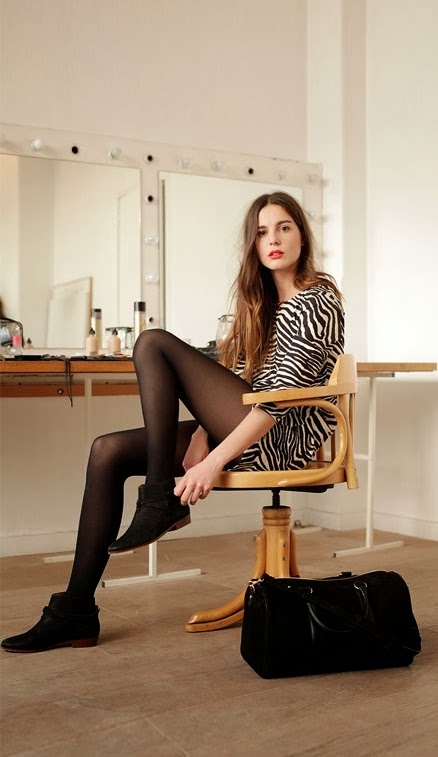
.bmp)
.bmp)
.bmp)
